Circular 703
Sarah Pitassi, Jennifer A. Hernandez Gifford, Craig Gifford, and Marcy Ward
College of Agricultural, Consumer and Environmental Sciences, New Mexico State University
Authors: Respectively, Graduate Student, Department of Animal and Range Sciences; Associate Professor, Department of Animal and Range Sciences; Extension Beef Cattle Specialist, Department of Extension Animal Sciences and Natural Resources; and Extension Livestock Specialist, Department of Extension Animal Sciences and Natural Resources, New Mexico State University. (Print Friendly PDF)
Introduction
This circular provides information on the processing events that occur from the birth of a lamb through the weaning process.
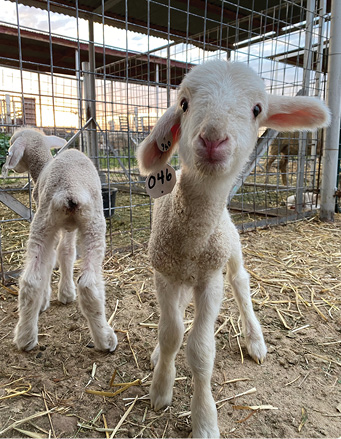
Lambing season is an exciting time in the sheep industry, and one that requires a significant amount of attention and producer input provided to both ewes and lambs.
Items needed for lambing:
- Clean and dry single pens (jugs)
- Bottles for potential bottle lambs
- Bottle warmer
- Tube for tube feeding
- Extra feeders and waters
- Selenium/vitamin E supplement (Bo-Se) and CDT vaccine (Clostridium perfringens type C and D and Clostridium tetani)
- Scale for weighing lambs
- Record sheets—lambing book
- Tools for docking tails and castrating ram lambs
- Palpation gloves
- Needles (20 or 21 gauge × 1 inch) and syringes
Parturition Events
A ewe’s gestation length is approximately 147 days, but can range from 144 to 152 days. Predicting the beginning of lambing season is done by counting from the first day the rams were turned in for breeding until they are separated from the ewes. Ewes should be checked regularly for 1 to 2 weeks prior to estimated lambing dates. When lambing starts, checking roughly four times a day is ideal. Lambing checks should happen before 7 a.m., with a final check near dark. Wi-fi cameras may be an option if checking throughout the day is not possible. Checks should include evaluating udder development, looking for prolapses, and checking for any type of dystocia or difficult lambing that may require intervention as the ewe approaches parturition. Observable parturition will begin with the appearance of a water bag. A lamb should be delivered within about 30 minutes to 1 hour after the water bag is expelled. Many ewes will deliver multiple lambs, and a water bag will appear before the delivery of each subsequent lamb.
After lambing, it is beneficial to bring the ewe and lambs into a jug (Figure 1), which is a smaller pen usually 4 × 4 or 4 × 5 feet, depending on the size of the ewe. This step is necessary to separate the ewe from the rest of the flock so she can bond and take care of her lamb(s). The ewe should have fresh water and feed in the jug. It is also necessary to strip the ewe’s teats. This is the process of taking off the waxy plug in order for the newborn lambs to nurse and get colostrum. To do this, grip the teat with your thumb and index finger at the top, near the udder, and apply gentle, even pressure while pulling down (Figure 2). Once colostrum is squeezed out, the plug has been removed. Colostrum is essential to a new lamb because it contains immunoglobulins, which provide immunity against diseases (Nowak and Poindron, 2006), as well as maintain body temperature and increase survival rate. Immunoglobulins are antibodies that attack foreign objects such as viruses and bacteria, and serves as the lamb’s protection against pathogens until the lamb can establish a functioning immune system. The ewe will produce colostrum for the first 18 to 24 hours after lambing, and it is crucial for the lamb to receive this within the first 6 to 12 hours after birth because absorption of large antibody molecules in the lamb’s hind gut is maximized during this window (Mellor and Murray, 1986).
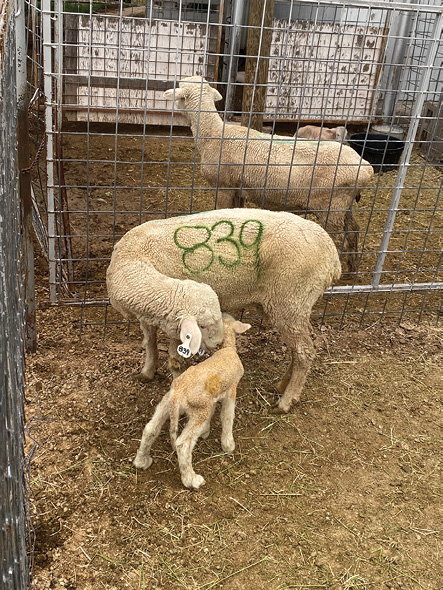
 Figure 1. Example of a lamb and ewe in a 4 × 4 or 4 × 5 feet jug.
Figure 1. Example of a lamb and ewe in a 4 × 4 or 4 × 5 feet jug.
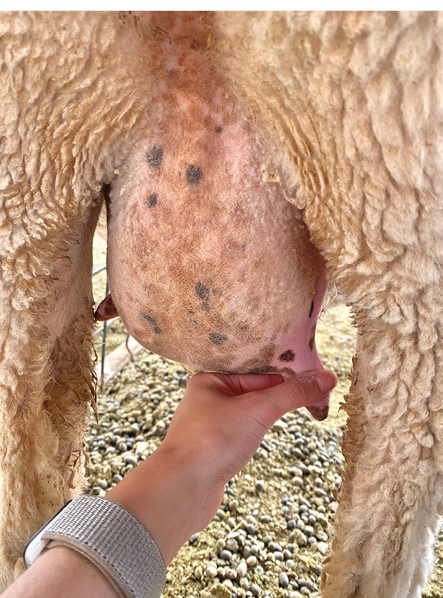
Figure 2. Process of stripping the ewe’s teats.
Managing Lambs
After moving the lamb and ewe to a jug, it is important to record all data that may help when selecting replacement ewes and when making decisions on mature ewes, such as culling. Recorded details for each ewe may include date and estimated time of lambing, lambing assistance (dystocia), mammary function, and maternal ability of the ewe. Lambing assistance refers to the amount of assistance the ewe needed to give birth. Some first-time mothers or smaller ewes with small pelvic openings may have dystocia problems. Dystocia describes any difficult birth situation and may require a call to the veterinarian if there is no progress while assisting the ewe. Mammary function refers to the appearance of the teats, and maternal ability indicates how well the ewe cleaned and cared for her lamb once it was born. Ewe lambs, which are first-time mothers, usually score worse when scoring for maternal ability because of their lack of experience (Menzies et al., 2007). Suggested scores for lambing assistance, mammary function, and maternal ability of the ewe can be found in Table 1. An example of a lambing record sheet can be found at the end of this circular. In regard to lamb data, weight, ear tag number, and lamb vigor would be useful records. Vigor is primarily assessed by the lamb’s ability to get up and suckle. After the ewe has been moved and has had time to bond with her lamb, the lamb can be taken to get “processed.”
|
Table 1. Example Scale for Scoring Lambing Assistance, Mammary Function, and Maternal Ability in Ewes |
||
|
Lambing Assistance |
Mammary Function |
Maternal Ability |
|
1 = No assistance |
1 = Normal appearance |
1 = Excellent |
|
2 = Minimal |
2 = Abnormal appearance, normal flow |
2 = Good |
|
3 = Moderate |
3 = Normal appearance, little flow |
3 = Fair |
|
4 = Extreme |
4 = Abnormal appearance, little flow |
4 = Poor |
|
5 = Cesarean section |
||
The following items are needed for processing:
- Ear tagger
- Ear tags
- Record sheets
- Scale for weighing lambs
- Iodine spray for the naval
Processing typically includes weighing, ear tagging, and dipping the naval into iodine. The naval is a direct line for bacteria to travel into the bloodstream. Tincture of iodine will dry the naval and has an antiseptic effect. Once the lamb is processed, it can be returned to its mother. In areas where white muscle disease is an issue, it may be necessary to provide the lamb with 1 mL of an intramuscular injection of Bo-Se, which contains vitamin E and selenium (Kennedy, 1979).
Lambs should have their tails docked for health purposes. Producers who prefer not to dock tails may want to consider a breed that is genetically predisposed to shorter tails, including many of the hair sheep breeds such as Dorper or St. Croix. Tail docking should be done within 7 days of lambing; however, it is recommended to dock within the first 24 hours (Menzies et al., 2007). An undocked tail can cause feces to accumulate, which attracts flies and possibly leads to infection (French et al., 1994). In some cases, the lamb’s tail will be chewed off during excessive cleaning by the ewe, resulting in a bacterial infection. Additionally, in a range setting, tails make lambs more susceptible to predation.
There are multiple ways to dock tails; however, the two methods that are used most often and recommended are using an electric tail docker or banding (Menzies et al., 2007). The electric tail docker (Figure 3) will cut and cauterize the tail, resulting in quick removal, while banding will cause restricted blood flow, leading to tail loss within a few weeks. Table 2 lists the advantages and disadvantages of both methods. The recommended length of docking is right above the caudal fold (Figure 4). It should be noted that show sheep are usually docked shorter. For individual county recommendations and guidelines related to show sheep, individuals should contact their local NMSU County 4-H agent for more information (https://aces.nmsu.edu/county/). Restraining a lamb for tail docking is similar to restraining for castration (Figure 5), and can be done by using one hand to hold the lamb and their legs and using the other hand to hold the tail for another person to properly dock the tail.
|
Table 2. Advantages and Disadvantages of Tail Docking Methods |
|||
|
Electric Tail Docker |
Banding |
||
|
Advantages |
Disadvantages |
Advantages |
Disadvantages |
|
Faster |
Needs electricity |
No bleeding |
Takes longer for the tail to fall off |
|
Cauterizes the tail |
Slight bleeding may occur |
Cheaper |
Prone to tetanus |
|
Able to get desired tail length |
More expensive than the banding method |
Able to get a shorter tail if desired |
|
|
No electricity needed |
|||
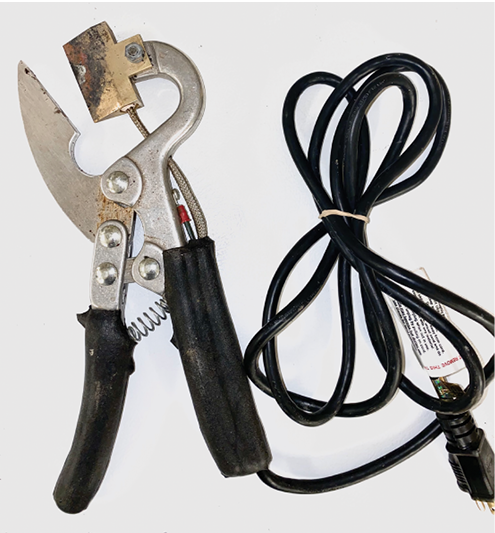
Figure 3. Electric tail docker.
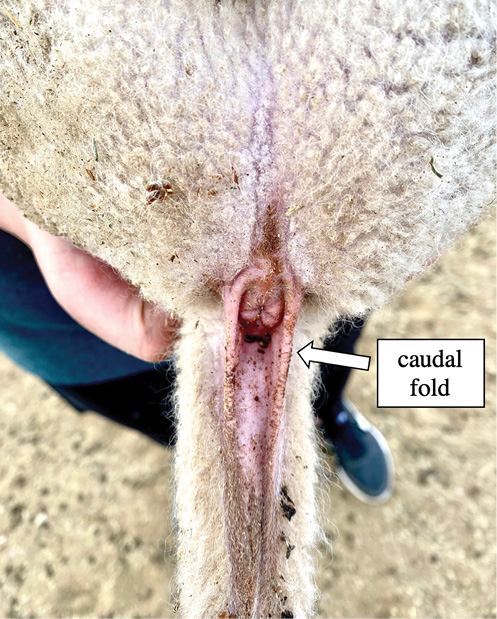
Figure 4. Position of where to dock tails. (Source: Engormix-Sheep.)
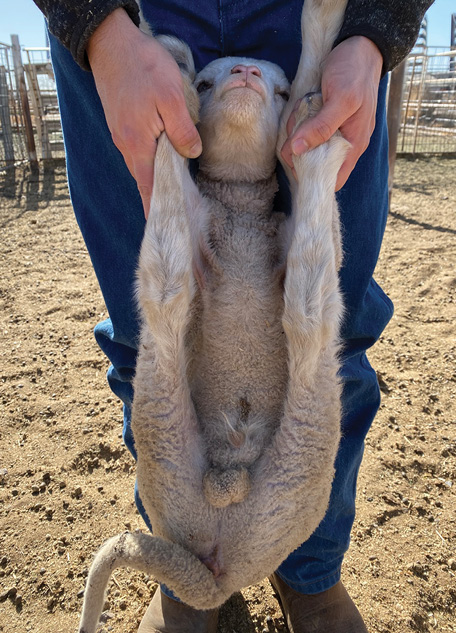
 Figure 5. Restraining a lamb for castration and tail docking.
Figure 5. Restraining a lamb for castration and tail docking.
Removing the Ewe and Lamb from the Jug
Reintroducing the ewe and newborn lamb to the flock will depend on both the number and health of the newborn lambs. Usually, ewes that are healthy with a single healthy lamb can be let out of the jug after 24 to 36 hours. If the ewe is healthy with two healthy lambs, it is recommended that they remain in the jug for 48 hours (Greiner and Wahlberg, 2009). If there are any signs of sickness in either the ewe or the lambs, they need to remain in the jug to be looked after and treated if necessary. The ewe and lambs should first be moved into a slightly larger area that is restricted to only ewes and their lambs. Keep the ewes and their lambs separated from pregnant ewes; this is important because ewes will hurt lambs that are not theirs.
Vaccinating Lambs and Castrating Ram Lambs
Lambs should be vaccinated for Clostridium perfringens type C and D and Clostridium tetani (CDT), which is the combination vaccine for overeating and tetanus. About 30 days after lambing, lambs need to be vaccinated against CDT, and a booster shot should be given 2 to 4 weeks later.
Ram lambs that are not going to be used for breeding need to be castrated at a young age to reduce pain and distress from the castration procedure (Molony et al., 1993). Ideally, lambs should be castrated shortly after birth or at 2 or 4 weeks after birth. Castration can be done in three ways: bands, surgical cutting, or using an emasculatome, also known as a Burdizzo. The banding method (Figure 6) is similar to banding the tails of lambs and is the most commonly used method. Banding reduces blood flow to the scrotum and testicles, resulting in short-term discomfort and subsequent castration. Surgical removal utilizes a sharp cutting knife and has been shown in studies to be the most painful (Thornton and Waterman-Pearson, 1999). Using a Burdizzo tool crushes the spermatic cord, ultimately crushing the blood vessels, which cuts off the blood supply to the testicles, causing them to shrivel and fall off.
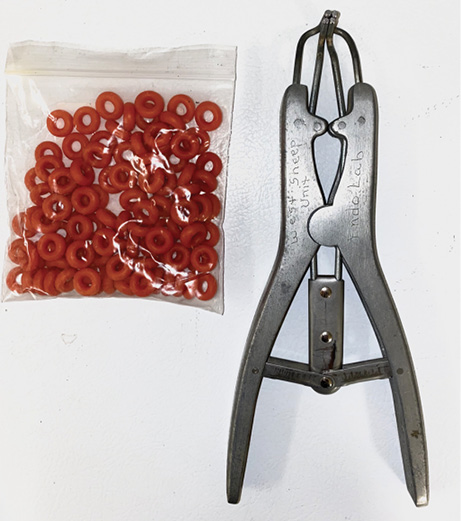
Figure 6. Castration bander and bands, used for tail docking and castration.
Orphan Lambs
Lambs may be orphaned due to abandonment, rejection, death of the ewe, or lack of milk production by the ewe (Menzies et al., 2007). Orphan lambs should be given colostrum from another healthy ewe within the flock if possible, or a commercial colostrum replacement product. If a ewe dies shortly after giving birth, her teats can be stripped to collect colostrum for her lamb(s). If a lamb is too weak to eat, tube feeding will be necessary to get that lamb colostrum (Figure 7). Tube feeding may require instruction from a local veterinarian or experienced producer. It can be challenging to get orphan lambs to accept a bottle initially. It is important to start with a hungry lamb. Feedings should be given about every 4 to 6 hours during the day. Lambs will need to be fed four times per day and will need to consume 20% of their body weight in milk every day (Greiner and Wahlberg, 2009). As the lambs get bigger and stronger, producers can start weaning them off the milk replacement. As lambs get older, feedings can be reduced to two times per day.
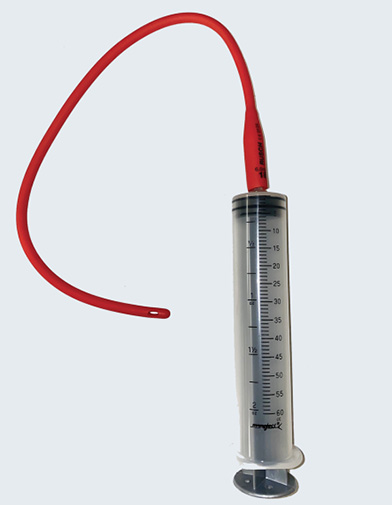
Figure 7. Tube feeder.
Weaning
At about 10 days of age, lambs should be introduced to creep feed. This helps with the weaning process and teaches the lamb to eat. The rumen of a lamb is not fully developed when it is born, and creep feeding stimulates the development of a fully functioning rumen (Abou Ward, 2008). A creep area should be accessible only to lambs and should have plenty of space. Feeders need to be filled throughout the day or when they are empty (Figure 8). Creep areas should also be located somewhere that is easily accessible to the producer. Typical creep feeds include alfalfa, oats, ground or cracked corn, soybean meal, or pellets. Normally, lambs should be weaned at approximately 12 weeks of age and will require a pen away from their mothers (Abou Ward, 2008).

Figure 8. Creep feed pen.
Conclusion
In summary, good management practices can be broken down into key management events, which will lead to a successful lambing season:
Pre-lambing
- Gathering items needed for lambing
- Periodically checking ewes
Lambing
- Looking out for dystocia issues
- Moving ewe and lamb to a dry, clean jug after lambing
Post-lambing
- Processing lambs
- Giving Bo-Se as necessary
- Docking tails
- Vaccinations and castration
- Providing creep feed
For more information regarding sheep management, visit https://aces.nmsu.edu/newmexicosheep/index.html.
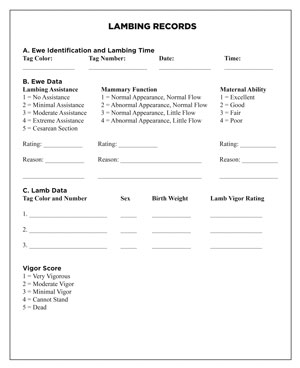
Example of the Lambing Records form.
For a print-quality version, refer to the PDF.
Literature Cited
Abou Ward, G.A. 2008. Effect of pre-weaning diet on lamb’s rumen development. American-Eurasian Journal of Agricultural & Environmental Sciences, 3, 561–567.
French, N.P., R. Wall, and K.L. Morgan. 1994. Lamb tail docking: A controlled field study of the effects of tail amputation on health and productivity. The Veterinary Record, 134, 463–467.
Greiner, S.P., and M.L. Wahlberg. 2009. Newborn lamb management. Blacksburg, VA: Virginia Cooperative Extension.
Kennedy, G.F. 1979. Sheep health—An update. South Dakota Sheep Field Day Research Reports, 10, 1–7. http://openprairie.sdstate.edu/sd_sheepday_1979
Mellor, D.J., and L. Murray. 1986. Making the most of colostrum at lambing. The Veterinary Record, 118, 351–353. doi: 10.1136/vr.118.13.351
Menzies, P.I., R.S. Youngquist, and W.R. Threlfall. 2007. Lambing management and neonatal care. In R.S. Youngquist and W.R. Threlfall (Eds.), Current Therapy in Large Animal Theriogenology, 2nd ed. (pp. 680–695). doi: 10.1016/B978-072169323-1.50094-5
Molony, V., J.E. Kent, and I.S. Robertson. 1993. Behavioural responses of lambs of three ages in the first three hours after three methods of castration and tail docking. Research in Veterinary Science, 55, 236–245. https://doi.org/10.1016/0034-5288(93)90087-V
Nowak, R., and P. Poindron. 2006. From birth to colostrum: Early steps leading to lamb survival. Reproduction Nutrition Development, 46, 431–446. doi: 10.1051/rnd:2006023
Thornton, P.D., and A.E. Waterman-Pearson. 1999. Quantification of the pain and distress responses to castration in young lambs. Research in Veterinary Science, 66, 107–118.
For further reading
B-127: Sheep and Goat Vaccine and Health Management Schedule
https://pubs.nmsu.edu/_b/B127/
CR-684: Sheep Breeds Best Suited for Arid Climates
https://pubs.nmsu.edu/_circulars/CR684/
CR-685: Sheep Nutrition
https://pubs.nmsu.edu/_circulars/CR685/


Acknowledgment: All NMSU photos by Sara Gurule.


Jennifer Hernandez Gifford is an Associate Professor in the Department of Animal and Range Sciences at New Mexico State University. She earned an M.S. at NMSU and a Ph.D. at Washington State University. Dr. Hernandez Gifford maintains a research sheep flock on the NMSU campus and trains graduate students in her research program. Her research focuses on reproductive physiology with an emphasis on endocrinology and ovarian physiology.
To find more resources for your business, home, or family, visit the College of Agricultural, Consumer and Environmental Sciences on the World Wide Web at pubs.nmsu.edu.
Contents of publications may be freely reproduced, with an appropriate citation, for educational purposes. All other rights reserved. For permission to use publications for other purposes, contact pubs@nmsu.edu or the authors listed on the publication.
New Mexico State University is an equal opportunity/affirmative action employer and educator. NMSU and the U.S. Department of Agriculture cooperating.
April 2022 Las Cruces, NM


